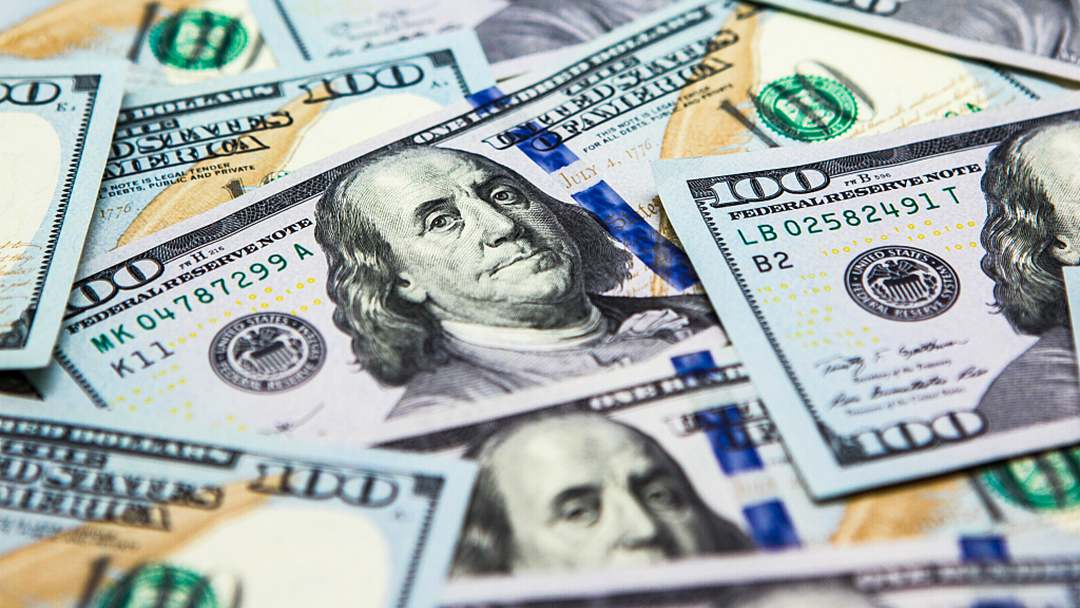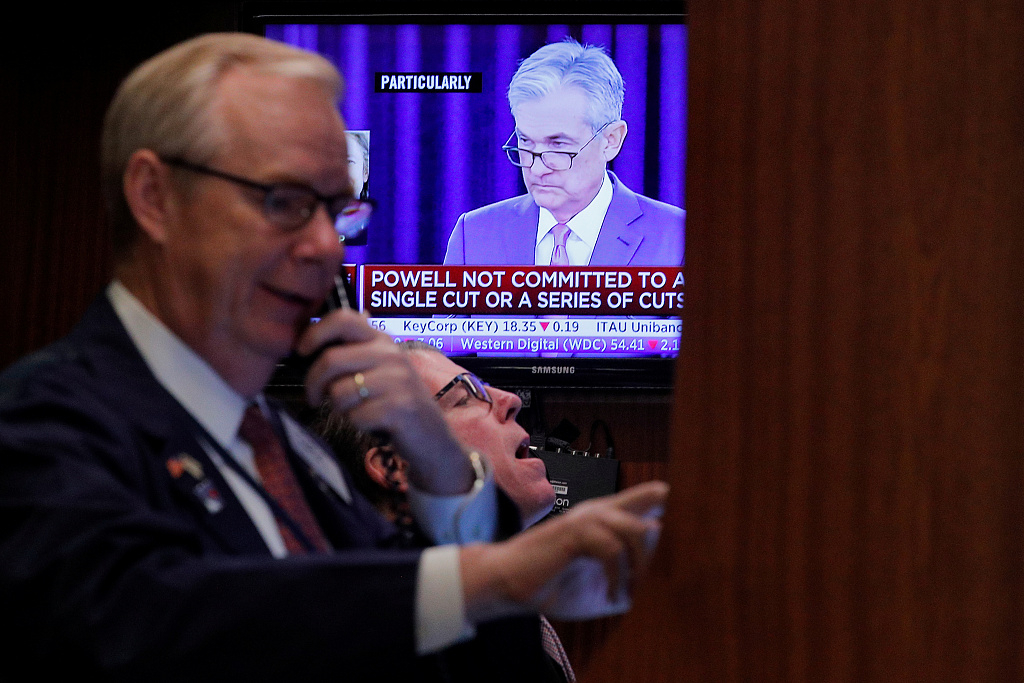Editor's note: Ernest Liu is a professor at the Bendheim Center for Finance, Princeton University. Atif Mian is a professor at Princeton University and serves as director of the Julis-Rabinowitz Center for Public Policy and Finance, the Woodrow Wilson School. Amir Sufi is Professor of Economics and Public Policy at the University of Chicago Booth School of Business. The article reflects the authors' opinions, and not necessarily the views of CGTN.
The real yield (inflation-adjusted) on 10-year U.S. Treasury Note bond is currently zero, and has been extremely low for most of the past eight years.
Outside of the U.S., 40 percent of the investment-grade bonds have negative nominal yields. And most recently, the European Central Bank further reduced its deposit rate to -0.5 percent as part of a new package of economic stimulus measures.
Low interest rates have traditionally been viewed as positive for economic growth, but our recent research suggests that this may not be the case.
Instead, extremely low interest rates may lead to slower growth by increasing market concentration. If this argument is correct, it implies that reducing interest rates further will not save the global economy from stagnation.
Traditional view holds that when long-term rates fall, the net present value of future cash flows increases, making it more attractive for firms to invest in productivity-enhancing technologies. Low interest rates therefore have an expansionary effect on the economy through stronger productivity growth.
But if low interest rates also have the opposite effect, they reduce the incentive for firms to invest in boosting productivity.
Moreover, as long-term real rates approach zero, this strategic contractionary effect dominates.
In today’s low-interest-rate environment, a further decline in rates will most probably slow the economy by reducing productivity growth.
This strategic effect works through industry competition.
Although lower interest rates encourage all firms in a sector to invest more, the incentive to do so is greater for market leaders than for followers. As a result, industries become more monopolistic over time as long-term rates fall.
Our research indicates that an industry leader and follower interact strategically in the sense that each carefully considers the other’s investment policy when deciding on its own.
In particular, because industry leaders respond more strongly to a decline in the interest rate, followers become discouraged and stop investing as leaders get too far ahead. And because leaders then face no serious competition, they too ultimately stop investing and become “lazy monopolists.”

Perhaps the best analogy is two runners engaged in a perpetual race around a track. The runner who finishes each lap in the lead earns a prize. And it is the present discounted value of these potential prizes that encourages the runners to improve their position.
Now, suppose that sometimes during the race, the interest rate used to discount future prizes falls.
Both runners would then want to run faster because future prizes are worth more today. This is the traditional economic effect. But the incentive to run faster is greater for the runner in the lead, because she is closer to the prizes and hence more likely to get them.
The lead runner therefore increases her pace, widening the distance between she and her competitor, who becomes discouraged because she is now less likely to catch up.
If the discouragement effect is large enough, the follower simply gives up.
Once that happens, the leader also slows down, as she no longer faces a competitive threat. And our research suggests that this strategic discouragement effect will dominate as interest rates approach zero.
In the real-world economy, the strategic effect is likely to be even stronger, because industry leaders and followers do not face the same interest rate in practice.
Followers typically pay a spread over the interest rate paid by market leaders – and this spread tends to persist as interest rates fall. A cost-of-funding advantage like this for industry leaders would further strengthen the strategic contractionary impact of low interest rates.

Traders work on the floor at the New York Stock Exchange (NYSE) in New York, U.S., July 31, 2019. /VCG Photo
Traders work on the floor at the New York Stock Exchange (NYSE) in New York, U.S., July 31, 2019. /VCG Photo
This contractionary effect helps explain a number of important global economic patterns.
First, the decline in interest rates that began in the early 1980s has been associated with growing market concentration, rising corporate profits, weaker business dynamism, and declining productivity growth.
All are consistent with our model. Moreover, the timing of the aggregate trends also matches the model: the data show an increase in market concentration and profitability from the 1980s through 2000, followed by a slowdown in productivity growth starting in 2005.
Second, the model makes some unique empirical predictions that we test against the data. For example, a stock portfolio that is long on industry leaders and short on industry followers generates positive returns when interest rates fall. More important, this effect becomes even stronger when the rate is low to begin with. This, too, is consistent with what the model predicts.
The contractionary effect of ultra-low interest rates has important implications for the global economy. Our analysis suggests that with interest rates already extremely low, a further decline will have a negative economic impact via increased market concentration and lower productivity growth. So, far from saving the global economy, lower interest rates may cause it more pain.
Copyright: Project Syndicate
(If you want to contribute and have specific expertise, please contact us at opinions@cgtn.com.)